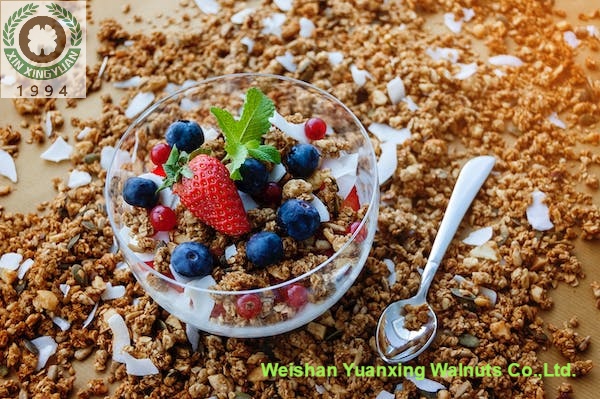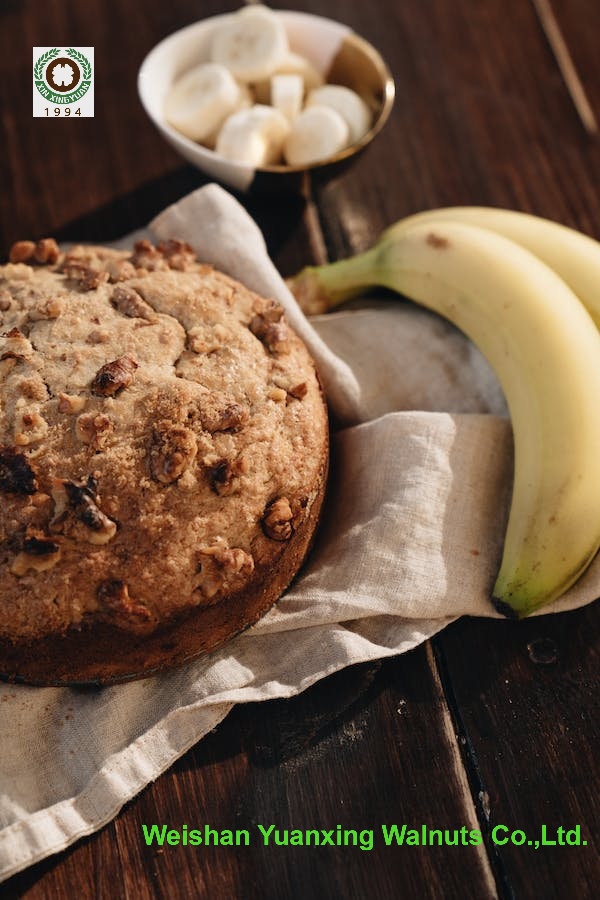Organic fertilizer fermentation process!
Any kind of qualified and high-quality organic fertilizer production must go through the compost fermentation process. Composting is the process by which microorganisms are used under certain conditions to continuously degrade and stabilize organic matter and produce a product suitable for land use.
Composting, an ancient and simple way to dispose of organic wastes and produce fertilizers, has been applied to various countries due to the depth of research and improvement of methods, because it has very good ecological significance and is also used for agricultural production. Benefits. There are many reports that using seed compost to prepare seedbeds can inhibit soil-borne diseases. And after the high temperature stage of the composting process, the antagonistic bacteria that come from one after another can make the number of bacteria reach a very high level; under the action of microorganisms, all organic matters in the composting process are not easy to be decomposed, stable, and easily absorbed by crops; Reduce the toxic effects of heavy metals within a certain range. It can be seen that composting is a simple and effective method for manufacturing bio-organic fertilizers and is beneficial to the development of ecological agriculture.
Most domestic organic fertilizer products in China are only composted and fermented for 15-20 days. Such products can only meet the harmless standards. The high-quality organic fertilizer compost fermentation process generally takes 45-60 days. This is because harmful microorganisms such as phytopathogenic pathogens, eggs, and weed seeds are killed during the early stage of the composting and during the high-temperature stage, but the main role of the microorganisms in this process is metabolism, reproduction, and only a very small amount. Metabolites, and these metabolites are also unstable and not easily absorbed by plants. Until the later cooling period, microorganisms will perform humification of organic matter, and in the process produce a large number of metabolites that are beneficial to plant growth and absorption. This process takes 45-60 days. Composting through this process can achieve three purposes: one is harmless; the other is humification; and the third is a large number of microbial metabolites such as various antibiotics and protein substances.
Why does compost produce this effect? Below we introduce a more detailed introduction to the principle of composting.
Organic fertilizer fermentation principle
Organic matter conversion during composting
Composting organic matter undergoes complex transformation under the influence of microorganisms. This transformation can be summarized into two processes: one is the mineralization process of organic matter, which decomposes the complex organic matter into simple substances, and finally generates carbon dioxide, water, and mineral nutrients. Etc.; the other is the humification process of organic matter, that is, organic matter is decomposed and re-synthesized to generate more complex special organic matter-humus. The two processes are performed at the same time, but in the opposite direction. Under different conditions, there is a significant difference in the respective strengths.
Mineralization of Organic Matter
(1) The decomposition-free polysaccharide compound (starch, cellulose, hemicellulose) containing no nitrogen-containing organic matter is first hydrolyzed to a monosaccharide by the action of hydrolytic enzymes secreted by microorganisms. Glucose decomposes rapidly under well-ventilated conditions, and alcohol, acetic acid, oxalic acid and other intermediate products are not easily accumulated, eventually forming CO2 and H2O, and releasing a large amount of heat energy. If the ventilation is poor, the monosaccharides decompose slowly under the effect of anaerobic microorganisms, producing less heat and accumulating some intermediate products - organic acids. In the case of extremely anaerobic microorganisms, reduced substances such as CH4 and H2 are also produced.
(2) Decomposition of Nitrogenous Organic Compounds Nitrogenous organic compounds in compost include proteins, amino acids, alkaloids, humus, and the like. With the exception of humus, most of them are easily decomposed. For example, proteins are gradually degraded under the action of proteases secreted by microorganisms to produce various amino acids, and then formed into ammonium salts and nitrates through ammoniating and nitrification, respectively, which can be absorbed and utilized by plants.
(3) Conversion of Phosphorus-Containing Organic Compounds Phosphorus-containing organic compounds in the compost, under the influence of a variety of saprophytic microorganisms, form phosphoric acids and become nutrients that plants can absorb and use.
(4) Sulfur-containing organic matter in the conversion compost of sulfur-containing organic matter generates hydrogen sulfide through the action of microorganisms. Hydrogen sulfide is easy to accumulate in an odious environment and can be toxic to plants and microorganisms. However, under well-ventilated conditions, hydrogen sulfide is oxidized to sulfuric acid by the action of sulfur bacteria, and forms sulphate with the salt in the compost, which not only eliminates the poisoning of hydrogen sulfide, but also becomes a nutrient that the plant can absorb. In the case of poor ventilation, reverse sulphidation occurs and sulfuric acid is converted to H2S, which is toxic to plants. During compost fermentation, the anti-vulcanization effect can be eliminated by regular upturns to improve compost ventilation.
(5) Conversion of lipids and aromatic organics The structure of tannins, resins, etc. is complex, the decomposition is slow, and the final products are also CO2 and water; lignin is a particularly stable organic in compost containing vegetal raw materials (such as bark, sawdust, etc.) Compounds, which are complex in structure, contain aromatic nucleus, and exist in poly form in plant tissues, are extremely difficult to decompose. Under well-ventilated conditions, decomposition is slowly carried out mainly by the action of fungi and actinomycetes, and its aromatic nuclei can become quinoid compounds, which are one of the raw materials for resynthesis of humic substances. Of course, these substances will continue to be decomposed under certain conditions.
In summary, the mineralization of compost organic matter can provide quick-acting nutrients for crops and microorganisms, provide energy for microbial activities, and prepare basic raw materials for humification of composted organic matter. When aerobic microbial activity dominates the compost, organic matter rapidly mineralizes to produce more carbon dioxide, water, and other nutrients. The decomposition rate is rapid and thorough, and a large amount of heat energy is released; when the anaerobic microorganism activity dominates, the organic matter is decomposed. The speed is slow, and often not complete. It releases less heat energy. Apart from plant nutrients, the decomposition products are easy to accumulate organic acids and reducing substances such as CH4, H2S, PH3, and H2. When they reach a certain level, they are unfavorable to crop growth. Even harmful. Therefore, overturning during compost fermentation is also to change the type of microbial activity to eliminate harmful substances.
2. The humification process of organic matter
There are many ways to describe the formation process of humus. In summary, it can be roughly divided into two stages. In the first stage, organic residues decompose to form the raw materials that make up humic molecules, such as polyphenols, nitrogen-containing organic compounds (amino acids, peptides, etc.), etc. In the second stage, the polyphenol oxidase secreted by the microorganism first oxidizes polyphenols to quinones, and then condenses with amino acids or peptides to form humic monomers. Because there are many kinds of phenols, quinones, and amino acids, the ways of condensing each other are not the same, and thus the formed humic acid monomers are also diverse. Under different conditions, these monomers are further condensed to form molecules of unequal size.
Composting fermentation process
Composting is actually a form of waste stabilization, but it requires special humidity, ventilation conditions, and microorganisms to produce the right temperature. It is generally believed that this temperature is higher than 45°C. Maintaining this high temperature can inactivate pathogens and kill weed seeds. Residual organic matter after reasonable composting has a low decomposition rate, is relatively stable, and is easily absorbed by plants. Odor after composting can be greatly reduced.
There are many different kinds of microorganisms involved in the composting process. Due to changes in raw materials and conditions, the number of various microorganisms is constantly changing, so no microorganism always dominates the composting process. Each environment has its own specific microbial flora. The diversity of microorganisms allows the compost to avoid system collapse even if external conditions change.
The composting process mainly depends on the action of microorganisms, which are the main body of composting fermentation. There are two sources of microorganisms involved in composting: one is a large number of microorganisms in organic waste; the other is artificially added microbial inoculants. These strains have a strong ability to decompose certain organic wastes under certain conditions, and have the characteristics of strong activity, rapid reproduction, rapid decomposition of organic matter, etc., which can accelerate the progress of composting reaction and shorten the time of composting reaction.
Composting is generally divided into aerobic composting and anaerobic composting. Aerobic compost is an organic material decomposition process under aerobic conditions. Its metabolites are mainly carbon dioxide, water and heat. Anaerobic compost is the decomposition process of organic materials under anaerobic conditions. The final metabolite of anaerobic decomposition is methane. , carbon dioxide and many low molecular weight intermediates, such as organic acids.
The main microorganisms involved in the composting process are bacteria, fungi, and actinomycetes. All three microorganisms have mesophiles and thermophiles.
During the composting process, the change of population of microorganisms with temperature changes as follows: low- and medium-temperature bacteria mainly change to medium-high temperature bacteria, and medium-high temperature bacteria mainly transform to low-temperature bacteria. With the increase of composting time, bacteria gradually decreased, actinomycetes gradually increased, molds and yeasts significantly decreased at the end of composting.
The fermentation process of organic compost can be simply divided into the following 4 stages
(1) During the initial stage of composting during the heating stage, the microorganisms in the compost are mainly medium-temperature and aerobic, and the most common are non-spore-forming bacteria, spore-forming bacteria, and mold. They start the composting fermentation process, under the aerobic conditions, the decomposition of easily decomposable organic substances (such as simple sugars, starch, protein, etc.), generate a lot of heat, and constantly improve the compost temperature, from about 20 °C to 40 °C, said For the heating phase, or in the temperature phase.
(2) In the high-temperature stage With the increase of temperature, good-heat microorganisms gradually take the place of the mesothermal species and play a leading role. The temperature continues to rise, generally reaching 50°C or more within a few days, and entering the high-temperature stage. In the high temperature stage, actinomycetes and thermophilic fungi become the main species. They strongly decompose the complex organic substances (such as cellulose, hemicellulose, pectin substances, etc.) in compost, and the heat accumulates. The compost temperature rises to 60-70°C, and can even reach as high as 80°C. Microorganisms also have a large number of deaths or dormancy (more than 20 days), which has a very important role in accelerating compost maturity. Improperly composted compost, which has only a very short period of high temperature, or does not reach high temperatures at all, is therefore very slow to decompose and does not reach the half-ripe state within six months or longer.
(3) Cooling phase When the high-temperature phase lasts for a certain period of time, most of the cellulose, hemicellulose, and pectin have been decomposed, leaving difficult-to-decompose complex components (such as lignin) and newly formed humus. The temperature gradually decreased. When the temperature drops below 40°C, mesophilic microorganisms become dominant again.
If the cooling period comes early, it indicates that the composting conditions are not ideal and the decomposition of plant material is not sufficient. At this time, it is possible to turn the heap and mix the accumulated material so that it generates a second heat and warms up to promote compost maturity.
(4) Decomposing and composting After composting, the volume shrinks, and the temperature of the heap drops to slightly above the air temperature. At this time, the compost should be compacted, resulting in an anaerobic state, which weakens the mineralization of organic matter to facilitate fertilizer conservation.
In short, the fermentation process of organic compost is actually the process of metabolism and reproduction of various microorganisms. The metabolic process of microorganisms is the process of organic matter decomposition. Decomposition of organic matter will inevitably produce energy that drives the process of composting to increase the temperature while drying the wet substrate.
Many compost matrices carry human, animal and plant pathogens, and unpleasant organisms such as weed seeds. During the composting process, the growth of these organisms can be effectively controlled by continuously raising the temperature for a short period of time. Therefore, a major advantage of high-temperature composting is its ability to inactivate human and plant and animal pathogens and seeds.
The inactivation of pathogens and seeds is due to their cell death, and cell death is largely based on the thermal inactivation of enzymes. At a suitable temperature, inactivation of the enzyme is reversible, but it is irreversible at high temperatures. The active portion of the enzyme will rapidly decrease over a small temperature range. Without enzymes, cells lose their function and die. Only a few enzymes are able to withstand long periods of high temperatures. Therefore, microorganisms are very sensitive to heat inactivation.
Studies have shown that heating at a certain temperature for a period of time can destroy pathogens or annoying organisms. It is usually heated at a temperature of 60-70°C (damp heat) for 5-10 minutes. The non-dormancy activity of non-spore and spore bacteria can be destroyed. Using heat sterilization, heating at 70 °C for 30 min can eliminate pathogens in the sludge. However, at lower temperatures (50-60°C), the inactivation of some pathogens can be as long as 60 days. Therefore, maintaining the temperature above 60°C for a certain period of time during composting is a must.
During the composting process, it should be turned over when necessary. It is generally performed when the reactor temperature begins to cool down beyond the peak, and turning the reactor can re-homogenize the materials with different inner layer decomposition temperatures. If the humidity is insufficient, some water can be added to promote the compost evenly.
During the composting process, the death, turnover, and transformation of various organisms and microorganisms in the composting process are carried out at the same time. The above block introduction is a simple introduction to the principle of compost fermentation from different perspectives, whether it is from thermodynamics, biology, or material transformation. From an angle, these reactions are not completed in a short time of a few days or a dozen days. This is why compost will still experience 45-60 even if various conditions such as temperature, humidity, moisture and microorganisms are well controlled. The reason for the time of day.
Light Color Pieces Walnuts Kernels



Light Color Pieces Walnuts Kernels,Walnut Kernels Light Quarters,Natural Walnut Kernels Light Amber,Walnut Kernels Light Amber
Weishan Yuanxing Walnuts Co.,Ltd. , https://www.walnutsxxy.com
